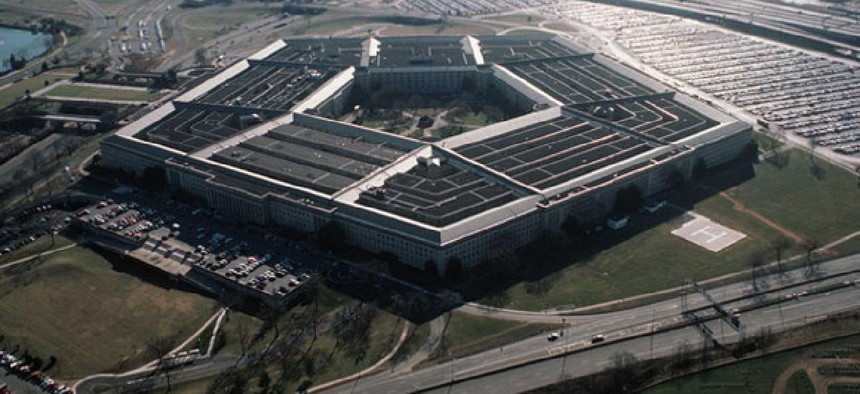Defense law aims to preempt software supply chain attacks

Defense Department file photo
Pentagon officials must provide regular briefings on cyber operations and the evolution of Cyber Command.
Military software engineers will soon have to follow new testing rules amid high-profile hacks that occur due to design flaws in computer code. The new policy was codified in the 2013 National Defense Authorization Act signed by President Obama Jan. 2.
Homeland Security officials have warned that contractor requirements and code developers are overlooking software integrity to the detriment of national security. The new Pentagon “baseline software assurance policy” will demand checks for bugs during system conception through system shutdown.
In addition to mandating tighter software assurance, the law also requires Defense officials to brief Congress on a possible reorganization of the U.S. Cyber Command; insists defense companies inform Pentagon officials about penetrations of company-owned networks; and asks for a strategy for deploying a futuristic defensewide information technology structure.
The Defense Department software assurance directive requires that IT staff use automated vulnerability analysis tools to inspect software code “during the entire lifecycle” of the computer program. Software assurance refers to the level of confidence that code is free of bugs inserted either inadvertently or intentionally that can create gateways for attackers.
Retesting throughout the software supply chain is critical, EMC experts say, pointing to Android smartphones that became infected, not because of the Android software, but because of flaws introduced by the phone manufacturer later, when components were assembled. Within a year, Defense officials must report to Congress on how the Pentagon “might hold contractors liable for software defects or vulnerabilities,” the lawmakers wrote.
Another measure to secure military networks centers on a “Joint Information Environment” that, as recently described by officials, would consolidate IT contracts across services, move computing from desktops to apps accessible from any device, and create what Cyber Command calls a “cyber operational picture.” By April, Defense must submit to lawmakers a strategy that includes a roadmap for the overhaul, as well as the estimated cost and projected cost savings of the transformation. By January 2014, officials must provide a personnel plan that lists the staffing levels required for each military department and combat support agency needed for “full spectrum cyber operations, including the national cyber defense mission and the operational plans of the combatant commands,” the law states.
Cyber Command Musical Chairs
While there is widespread support for upgrading the standing of U.S Cyber Command -- which is now subordinate to U.S. Strategic Command -- lawmakers directed Pentagon officials to consult them before making a move that would affect operations throughout the military services. They also want to know whether Cyber Command will continue to be led by the director of the Pentagon’s National Security Agency, as is the case now, or whether future commanders will devote their full attention to the organization.
“A change in the status of the United States Cyber Command has implications for the entire department and the national security of the United States, which require careful consideration,” the lawmakers wrote. The law requires Pentagon leaders to brief Congress on any recommendation to reorganize Cyber Command into a unified command “at the time when the Secretary of Defense makes such a proposal.”
If the Pentagon opts for future commanders to wear two hats, the lawmakers want to know “how a single individual could serve as a commander of a combatant command that conducts overt, though clandestine, cyber operations,” referring to the Cyber Command’s role, while simultaneously serving as the head of NSA, “an element of the intelligence community that conducts covert cyber operations . . . in a manner that affords deniability to the United States.”
In addition, the defense law orders quarterly briefings, starting in March, on attacks initiated by Pentagon cyber warriors against adversary networks. The Defense secretary must provide reports “on all offensive” operations in cyberspace carried out during the previous quarter, the legislation states.
Also due in March are criteria for measuring the effectiveness of procedures established in 2011 to manage so-called supply chain risks. Defense is concerned about bad actors or unwitting manufacturers tampering with military technology in production facilities worldwide. Tinkering can create trapdoors that enable cyberespionage or the hijacking of defense systems during warfare. By 2017, the department must report on the effectiveness of the criteria developed in March.
Separately, the mandate calls for a more robust defensewide threat-detection system to block leaks of classified data and identify potential insider threats, such as the one posed by Pvt. Bradley Manning, who was arrested in 2010 and faces numerous charges stemming from unauthorized data transfers to anti-secrets website WikiLeaks. When Pentagon officials file a 2015 budget request early next year, the law requires that they also present “a strategy to acquire next-generation host-based cyber security tools.” Lawmakers want the purchase to include equipment for insider threat detection, continuous monitoring of network protections, and virus fixes.
The system should be easily deployable on potentially millions of host devices and compatible with cloud-based systems as well as battlefield devices and weapons systems, according to the law. Defense has struggled to activate current system features due to their complexity, as well as coverage demands.
To monitor contractor-owned computers, the department for the first time will require that companies “rapidly report” to the Pentagon “each successful penetration of the network or information systems” that handle defense information, the lawmakers wrote. The alert must describe the technique used to compromise the system and a sample of the malware used to execute the breach, if known. Military officials also will have the power to probe the contractor’s equipment to discern whether military data was “exfiltrated from a network or information system” and, if so, the contents of the data stolen. This provision in essence compels companies to participate in part of what had been a voluntary information-sharing program.
NEXT STORY: Data dump; Network intrusion






